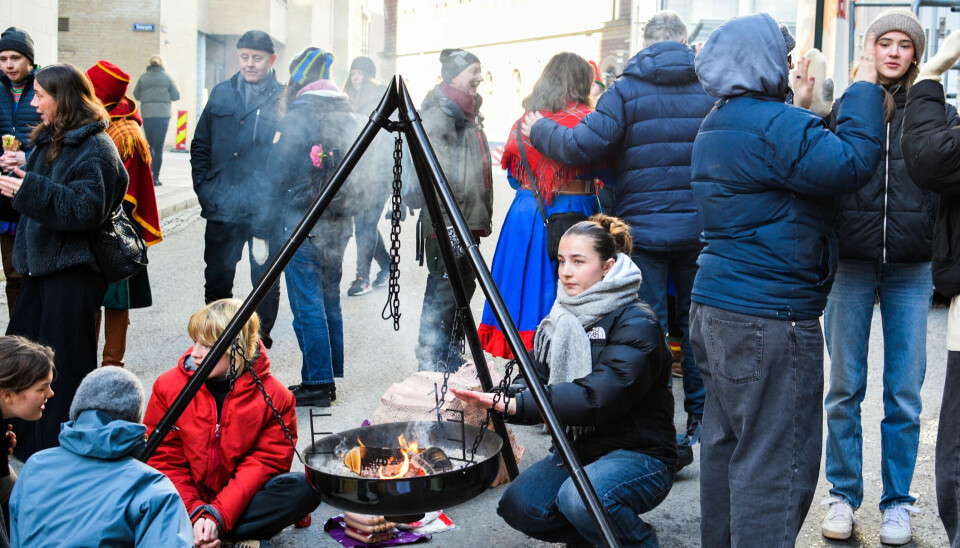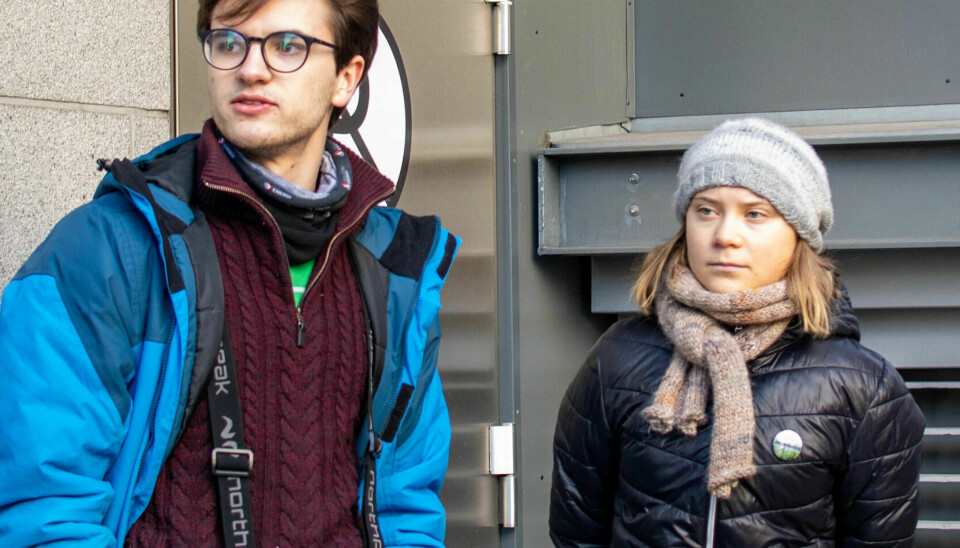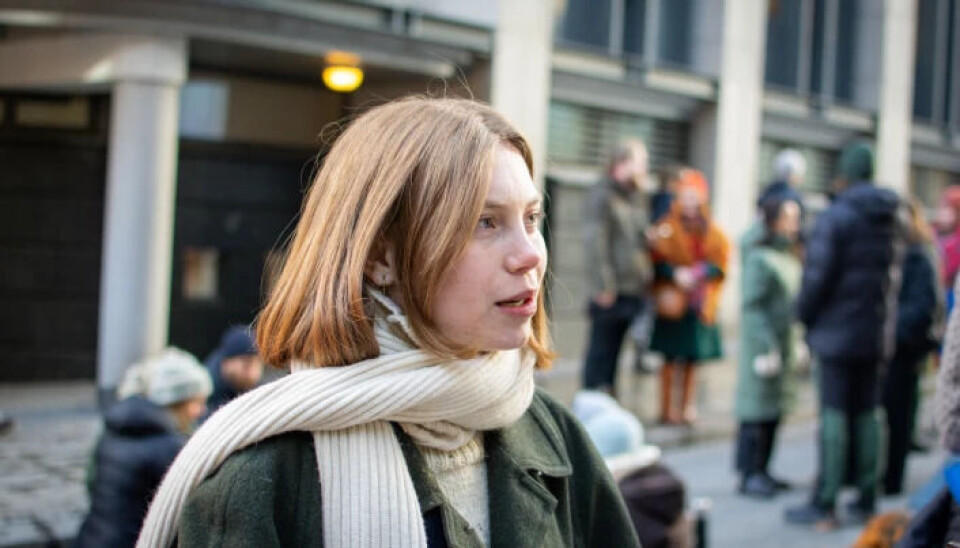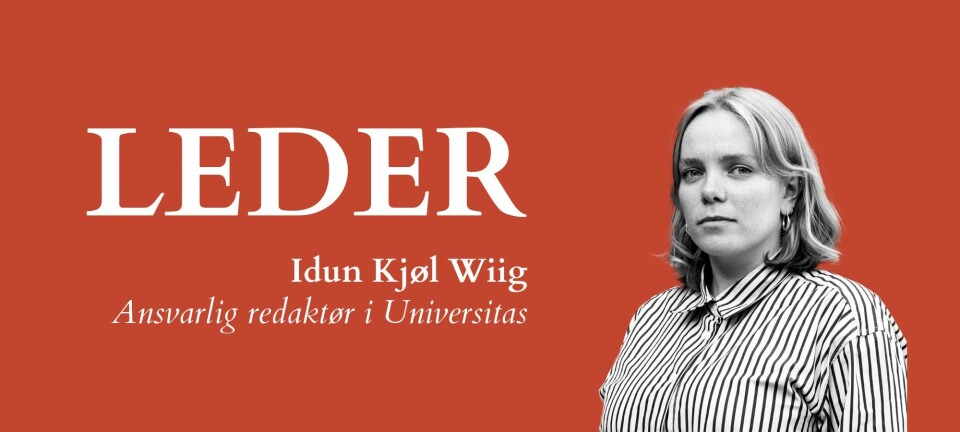
“Let the Mountains live”:
The Ministry of Petroleum and Energy blocked off by Sámi protestors
This is the translation of the Norwegian article written by Emilie Kaland Lindseth, edited by Harald Nordbø, photographs by Vladimir Zivanovic (published in Universitas on March 1, 2023).
Two weeks ago Sámi protestors and environmental activists occupied some of the Norwegian capital’s biggest ministry buildings in response to the wind turbines built in Fosen that breach the Sámi’s human rights. All over social media images of these protests were shared countless times, but why were they protesting?
Translator's note:
This article was translated from the original text written in Norwegian by my fellow colleagues at Universitas mentioned above. I would like to specify that the article has been translated almost two weeks after the original article was written, so modifications such as verb tenses have been made. Besides this, I have adjusted the text so that it is more adapted to an international student community who may not be so familiar with the history or status of the Sámi in Norway, hence the introduction that follows.
For centuries, the Sami indigenous people have herded reindeer in Northern territories spanning Norway, Sweden, Finland, and Russia. This practice is crucial to their livelihood and tradition. However, the localization of wind turbines at Fosen violates the UN International Convention on Civil and Political Rights, as it prevents the Sami from practicing reindeer herding on land designated for that purpose. The protection of Sami rights in Norway is a very serious matter. The Sami people in Norway were heavily discriminated against by the Norwegian government from the end of the 19th century, as a result of the policy of assimilating the Sami people. This policy resulted in the separation of Sami families, language suppression, and forced rejection of Sami identity in many cases.
It was not until 1987 that the Norwegian government established the Norwegian Sami Act, which granted rights to the Sami people, including the establishment of the Sami Parliament. Therefore, the failure of the Norwegian government to recognize and correct the breach of Sami rights at Fosen serves once again as a reminder of the violations against the Sami people, emphasizing the crucial need for action to defend those rights.
Journalists from Universitas report on what happened during last week's protests:
«Baajh vaeride årrodh // La fjella leve».Those words meaning “let the mountains live” were chanted by the activists as they outside of multiple ministries in Oslo.
Throughout the previous week activists from “Natur og Ungdom” (Nature and Youth) and “NSR-N”, the youth committee of the Norwegian Sámi Association, occupied various government ministries in protest against the Norwegian government’s reluctance to demolish the wind turbines at Fosen.
It had been more than 500 days since the Supreme Court ruled the construction and activity of the wind power farm at Fosen as invalid. This is due to the fact that it violates Article 27 of the UN Convention on Civil and Political Rights.
The Sámi activists had decided that they had enough of waiting for the government's action, and they marched together into the Ministry of Petroleum and Energy; they stayed there over the weekend of February 24-26. They remained there until Monday — when they were suddenly thrown out by the police at 03.15 AM. In the following days, the action continued outside once again whilst the movement gained even more strength in numbers.
– I think that it’s cowardly that they came in to take people in the middle of the night, says Aslak Heika Hætta Bjørn who herself took part in the action on the Friday night.
Universitas met with Hætta Bjørn at the back entrance of the mentioned ministry. Some twenty activists, with and without Sámi costumes, who had been protesting there since the Monday gathered at the back entrance to the Ministry of Petroleum and Energy to continue the demonstration.
Hætta Bjørn believes that the police action was executed at night in an attempt to avoid media coverage of the Sámi being carried out of the ministry. She perceives this as one of several measures the government has taken up to isolate the activists. She continues by saying that they struggled to get access to food and medicine during their protest inside the ministry.

Traditional costumes worn inside out
More than 150 people took part in the protest against the wind turbine farm on Monday, February 27. The Swedish climate activist Greta Thunberg came to Oslo on Monday night to take part in the occupation of the ministry lobby, but she was refused entry by the police.
Instead, Thunberg had to stand and watch as 13 of her fellow activists were carried out and taken to the police station. However it did not take long before the action was underway once again — this time around the aim was to shut down the entire state. "It gives me a lot of hope to see all the people who are here, even if the reason why you have to be sitting here is shameful", said Thunberg in an appeal to those present.
Party leaders of Rødt (The Red Party, a left-wing political party) and SV (The socialist left-wing party), Bjørnar Moxnes and Kirsti Bergstø, also held appeals in support of the Fosen Sámi. MDG (The Green Party)’s spokesperson Arild Hermstad barely started to make his appeal before he was interrupted by the head of Natur og Ungdom Gina Gylver, who announced that the police were on their way again and that it was time for the activists to chain themselves.
Together with the Sámi wearing their traditional costumes inside out, their allies, including Thunberg, chained themselves to the Ministry of Petroleum and Energy. Hætta Bjørn tells Universitas that the traditional costumes worn inside-out are an old Sámi symbol to show opposition and disagreement:
– They show no sign of following up on the verdict, which very clearly states that the Sámi's human rights have been violated.
– The response we have received from the government so far has been nothing more than vague and shows that they do not respect the Sámi's human rights. That is why we are here today.
Acts of solidarity
Several students have skipped lectures to participate in the action. Jack Schønberg (20) and Sigve Fredriksen (20) both attend the University of Oslo and study philosophy, politics and economics and a professional course in psychology respectively. They believe that students have a responsibility to use the activist tradition to stand up against injustice, especially in situations where human rights are violated.
– We encourage all students who have the chance to stand in solidarity with the Sámi to do so, even if you might miss a lecture or two, say Schønberg and Fredriksen to Universitas.
Both are willing to participate in civil disobedience by chaining themselves to the ministry building, despite the risk of being fined for over NOK 10,000. However for Schønberg, the choice is simple:
– With the way things are now, I see no other way. The human rights of the Sámi at Fosen have been violated for over 500 days and they will be violated for another 500 days unless someone does something.
Fredriksen agrees.
– We often say that it is the Sámi and the indigenous people that are brave. And although they clearly are, I believe this must end and that we must also start being brave ourselves. The Sámi should not stand alone in the fight against human rights violations.

The fight for human rights
At a time when the state is under growing pressure to reduce the country's climate emissions and electricity prices, the closure of 151 wind turbines is not at the top of the government's list of priorities. Even more conflicts between climate, nature and human rights are to be expected in the future. In the same appeal, Thunberg warned against so-called “green colonialism,” which she defines as measures in which indigenous people's lands are colonized in order to achieve climate goals.
“Grønn Ungdom” (Green Youth) spokesperson Margit Martinsen agrees with Thunberg that the fight against climate change and the respect of human rights must go hand in hand. Martinsen goes on to say that she is tired of politicians only using climate as an argument when it benefits the country's gross national product.
– The fight against climate change should never be something that violates human rights, says Martinsen.
Martinsen is herself a student of international studies at the University of Oslo, and has worked on several cases where climate change has been used to legitimize violations of human rights. As an example, she highlights how Morocco has started to build wind turbines in occupied areas in the Western Sahara, and then sell the electricity on to the EU in their energy crisis:
– It is very easy to say that the fight against climate charity should be a charity, but I think we should get better at distinguishing who has caused what.
– This is by no means an easy task, but it is unfair that the Sámi have to give up parts of their culture and land in order to compensate for climate emissions they have had no part in creating, says Martinsen.
Will the turbines fall?

Throughout the week when the action took place, several attempts were made to establish dialogue between the activists and the government. Disagreements in how the Supreme Court’s decision should be interpreted have led to divides between the executive power and the protesters.
On Tuesday, February 28, Petroleum and Energy minister Terje Aasland went down to his own ministry to meet the campaigners. There he was directly told by the activists that the time for idle talk has passed, and that the state must recognize and end the ongoing human rights violation at Fosen.
The government and Aasland have until now been reluctant to define the 151 wind turbines at Fosen as a human rights violation, and have argued that the Supreme Court judgment does not mean that demolition is the only alternative.
It has not yet been determined which other alternatives are under consideration. While the government stays in the background, the protest gets stronger in both strength and numbers. What began with a single demonstration inside the ministry has now spread to with a goal of shutting down the entire state:
– What we expect from the government are concrete pledges that the case will be followed up, about when the turbines will be demolished and how the nature of Fosen will be restored. We will stay here as long as needed, concludes Hætta Bjørn.
[For the record: Universitas Journalist Harald Nordbø has links to the demonstrations mentioned above. He has only contributed with editing the Norwegian written articles concerning this matter.]































